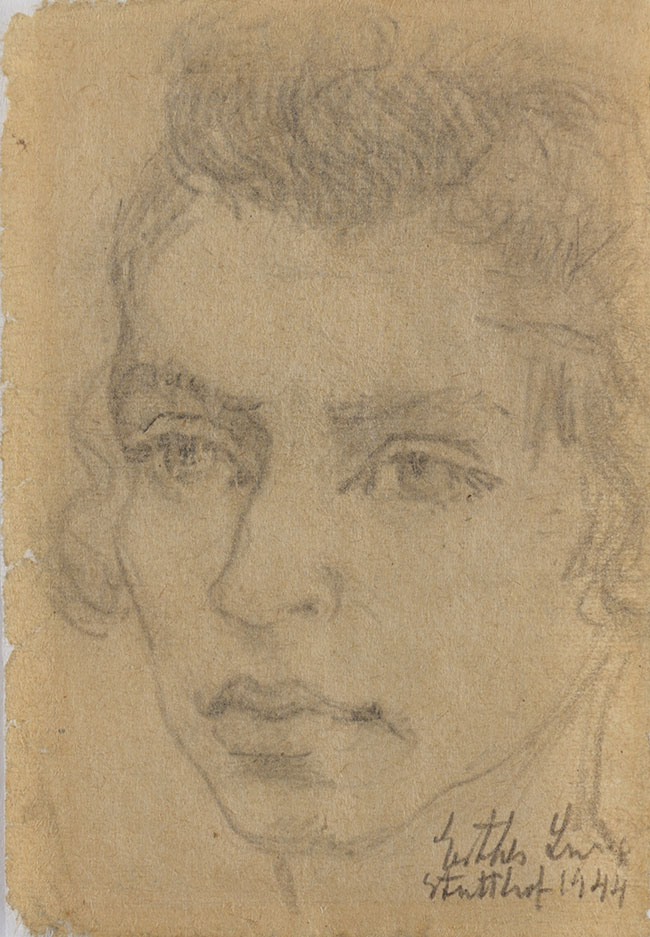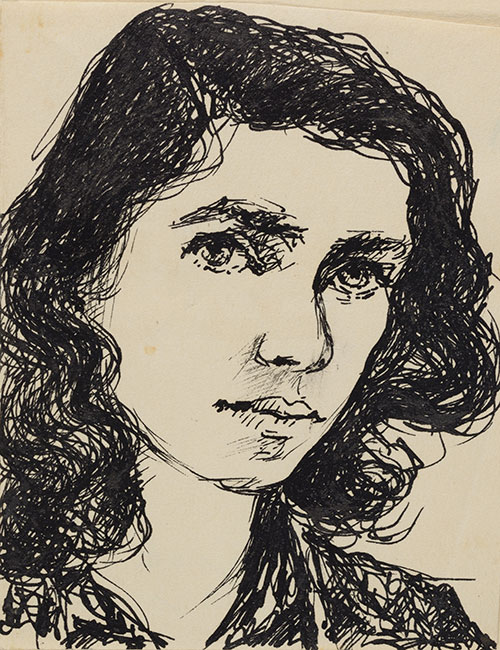
Pencil on paper
10.5 x 7.4 cm
Collection of the Yad Vashem Art Museum, Jerusalem

Esther Lurie studied stage design in Brussels and also painting at the Royal Academy of Fine Arts in Antwerp. In 1934 she and her parents immigrated to the Land of Israel, where she became an active painter. In 1938 she was awarded the Dizengoff Prize for Painting. In 1939 she traveled to Belgium for further studies and in the summer of that year also to Latvia and Lithuania to visit relatives. During the German occupation in June 1941, she was captured while visiting her sister in Kovno and was interned in the ghetto. There, under orders from the Germans, Lurie at first painted landscapes and portraits and later, at the request of the Judenrat, also documented scenes of ghetto life. The artists Josef Schlesinger, Jacob Lipschitz, and Ben Zion Schmidt joined her in this task from the fall of 1942 until the liquidation of the ghetto in July 1944. From Kovno Lurie was deported to the Stutthof camp and from there to the Leibitsch camp, where she was assigned to register prisoner numbers. After liberation she reached Italy, before returning to the Land of Israel in July 1945, where she settled, married, had two children, and continued to be an active artist.